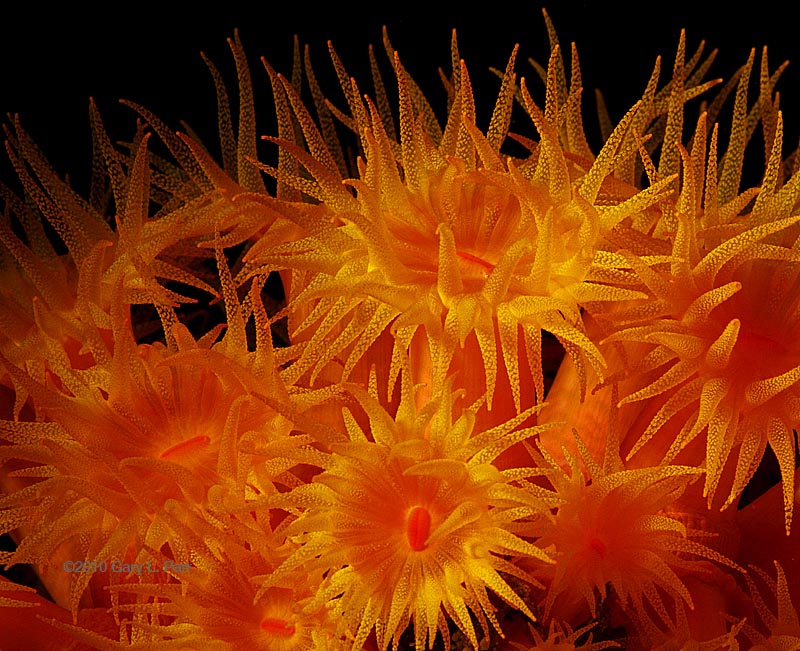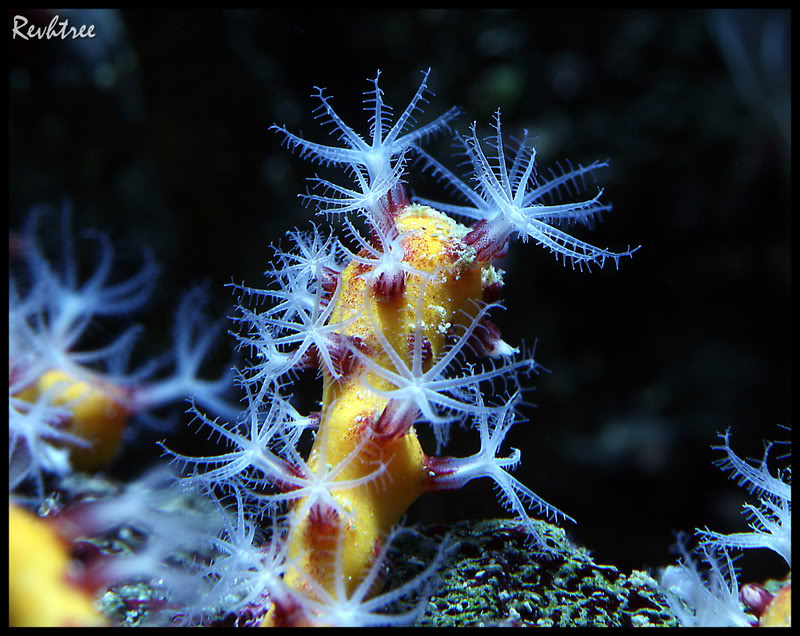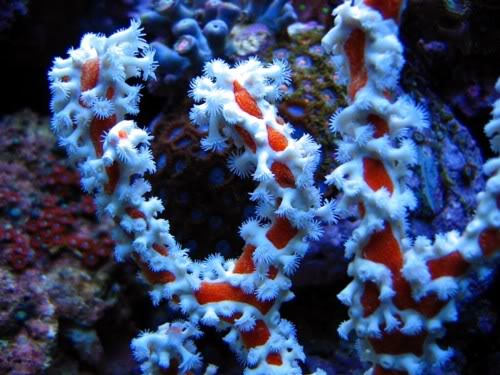NPS Not NPR! The Beauty Of Non-Photosynthetic Corals
NPS not NPR! The Beauty of Non-Photosynthetic Corals

Photo via Gary L. Parr at Reef2Reef.com
Believe it or not, there is a group of corals that does not use Photosynthesis as its main means of energy production, but these corals care requirements should not be left in the dark. Some of these corals can require more food than your cat! Some hobbyists have designed systems with oversized filtration and automated feeders that constantly blast their corals with food. Automated water changes of large quantities are also a common design, for these corals demand pristine water and the amount they eat causes more waste than some of the largest fish in the hobby for their body weight!
Some species include the following; Chili Coral, Tube Anemone, Tree Corals, Carnation Tree, Fuzzy Carrot, Siphonogorgia Tree, Aussie Spider Sponge, Sea Fans, Ball Sponges, Terrazoanthus, Sun Corals, and many more. Gorgonians are a common NPS, although some are photosynthetic.

Lighting an NPS tank is not like lighting SPS, but a photosynthetic capable light is still a good idea for the benefit of the live rock and coraline algae. Inverts also benefit from lighting as well as the visual effect being worth the money. NPS corals can live under full blown reef lighting, but like the photosynthetic species, some prefer the darker areas and even the darkest of caves, provided they get a good food supply. Another good reason to get reef capable lighting is to combat algae growth. A cheap light fixture is a great way to grow nuisance algae and cyanobacteria and smother your sponge!

Spider Sponge
There are some amazing setups out there. One thing in common with the more successful NPS tanks are overkill filtration. Overkill (in its common usage in describing tanks) is an understatement. These corals require so much food that in a standard reef tank the water would be disgusting! So how do we set up a tank that can handle multiple feeding a day?
AUTOMATION!!!
Feeding: Refrigerated dosing stations are being home-designed (because commercial ones do not exist and would be very expensive) to help aid the demands of these corals. Simply set up a dosing station, only inside of a mini fridge with a hole drilled for an air hose and sealed to keep the cold in. The refrigerated dosing station will then inject cold food into the tank. You can route the air hose into the return line even so that it blasts into the tank with the returning water from the sump, which helps evenly distribute the delicious juices and particles your corals love. These can also be less complicated. A simple wine chiller will keep a bottle of phytoplankton chilled for up to a week without spoiling, and by then your corals will have dumped the bottle anyway!
Water changes are a must in an NPS tank. They eat more than most aquarium animals, meaning tons of waste. A good way to keep up with the daily trashing of water is to automate your water changes. A Litermeter is a good tool to regulate how much water you want to change. It will suck out a designated amount of water that gets replaced by the new water with something like a float valve or switch to stop the new water when it is at the right level. Optimally, daily water changes are necessary of at least 20%.
Flow is different for each coral, so you will need to learn what your species like. Some love high speed water while others like the water that is nearly at a stand still. Wave makers are usually the best in all tanks, and there is no exception with NPS corals, as they are from the same ocean as your average corals.
Any hardy reef safe animal will do great in an NPS system provided the water quality does not get too bad. The average nitrate levels in most NPS systems run about a 25, so delicate quality seeking fish or inverts are a no-no!
Before you bring home an NPS for your Photosynthetic reef tank you must take some precautionary actions. You will have to feed the coral a lot, which will contaminate your tank. Most people will actually have a dedicated feeding container just for these corals. All you do is dunk the container in your tank, place the coral in the container and pull it out of the water. Set the coral feeding container on a table and feed the animal outside of your tank! Discard the water when you are done, or it defeats the purpose of removing it and can easily contaminate the aquarium. Feeding usually only takes 20-60 minutes of sitting in the container. Nothing fancy, just patience.
Culturing your own food is a great way to save tons of money and can be very simple once you master the correct bubble to light to food ratio for your particular culture. Phytoplankton, Nanochloropsis, Rotifers, and Brine Shrimp are very easy to mass produce in the secrecy of your aquarium stand or closet. If you have enough space you could make 100s of gallons at a time with a book shelf lined with 3 liter bottles and florescent bulbs across each row. Timed right you could use one bottle a day and by the time your 100th bottle was used your first one will be ready. This is actually not as crazy as it sounds if you plan on doing a fully stocked NPS tank any larger than a 90 gallon.
With the right know how and setup these corals can thrive! There is a certain dignity that comes with an established NPS tank that not that many people can say they have. It is not hard with the right tools and equipment, not to mention the cost to keep up with the water changes and high amounts of food. Do the right thing and plan ahead. It is more wise not to attempt this than it would be to go all out the wrong way. This is one of the most advanced types of setups out there and will require daily maintenance. For those who pay an aquarium guy to run your tanks, this may not be the kind for either party. Imagine what you pay per month for 4 weekly visits multiplied time seven! The maintenance man may enjoy the income but it can get very expensive if you like having someone do the work.
Click For Care on LARGE POLYP STONY NON PHOTOSYNTHETIC CORALS and TUBE ANEMONES

Leave a Reply
You must be logged in to post a comment.